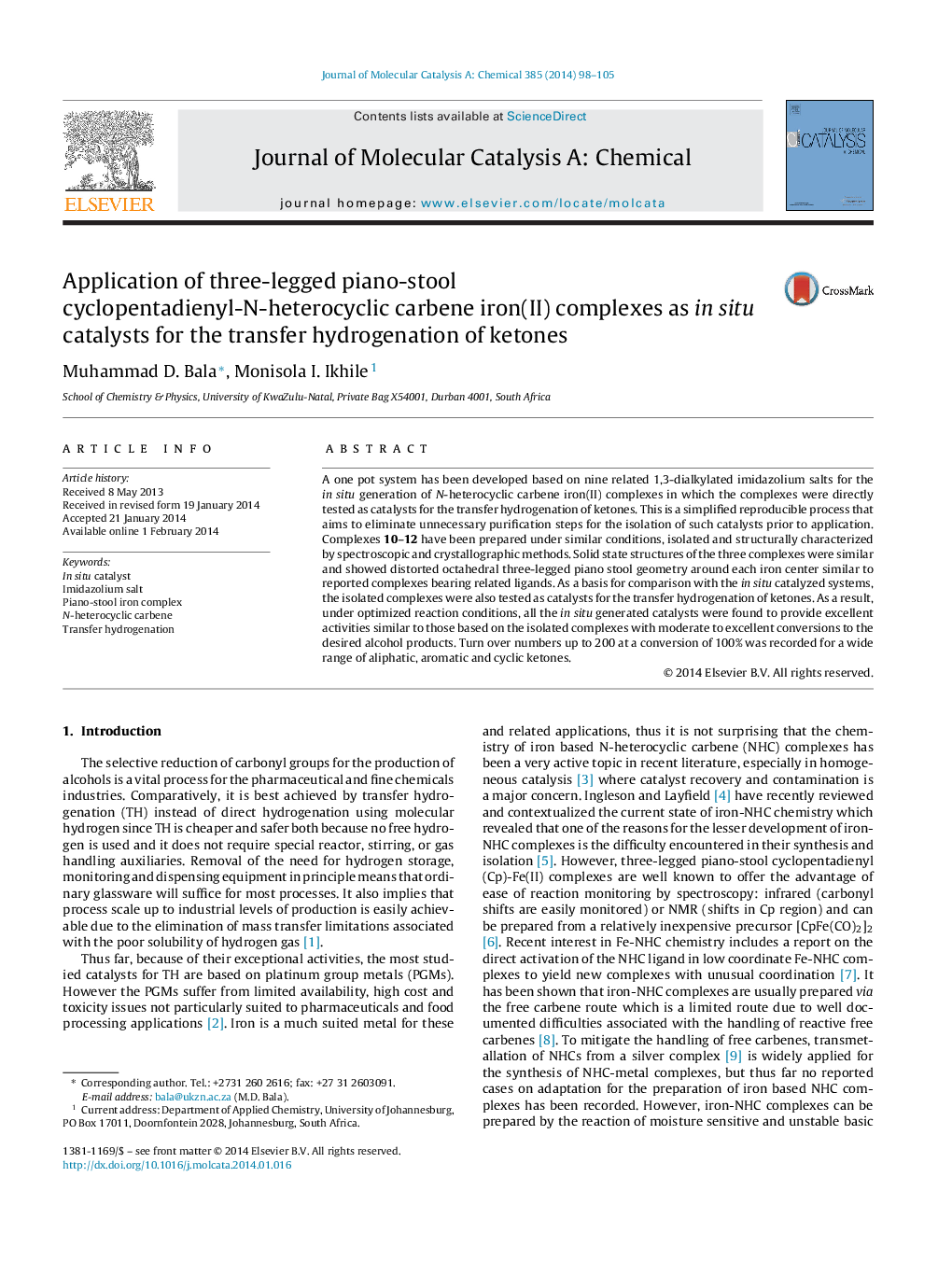| Article ID | Journal | Published Year | Pages | File Type |
|---|---|---|---|---|
| 65727 | Journal of Molecular Catalysis A: Chemical | 2014 | 8 Pages |
•Three new iron(II) N-heterocyclic carbene complexes structurally characterized by single crystal XRD.•Iron(II) N-heterocyclic carbene catalysts were generated in situ.•Transfer hydrogenation of aromatic, aliphatic and cyclic ketones was reported.•Structure/activity relationships established for the series of catalysts tested.
A one pot system has been developed based on nine related 1,3-dialkylated imidazolium salts for the in situ generation of N-heterocyclic carbene iron(II) complexes in which the complexes were directly tested as catalysts for the transfer hydrogenation of ketones. This is a simplified reproducible process that aims to eliminate unnecessary purification steps for the isolation of such catalysts prior to application. Complexes 10–12 have been prepared under similar conditions, isolated and structurally characterized by spectroscopic and crystallographic methods. Solid state structures of the three complexes were similar and showed distorted octahedral three-legged piano stool geometry around each iron center similar to reported complexes bearing related ligands. As a basis for comparison with the in situ catalyzed systems, the isolated complexes were also tested as catalysts for the transfer hydrogenation of ketones. As a result, under optimized reaction conditions, all the in situ generated catalysts were found to provide excellent activities similar to those based on the isolated complexes with moderate to excellent conversions to the desired alcohol products. Turn over numbers up to 200 at a conversion of 100% was recorded for a wide range of aliphatic, aromatic and cyclic ketones.
Graphical abstractFigure optionsDownload full-size imageDownload high-quality image (116 K)Download as PowerPoint slide
